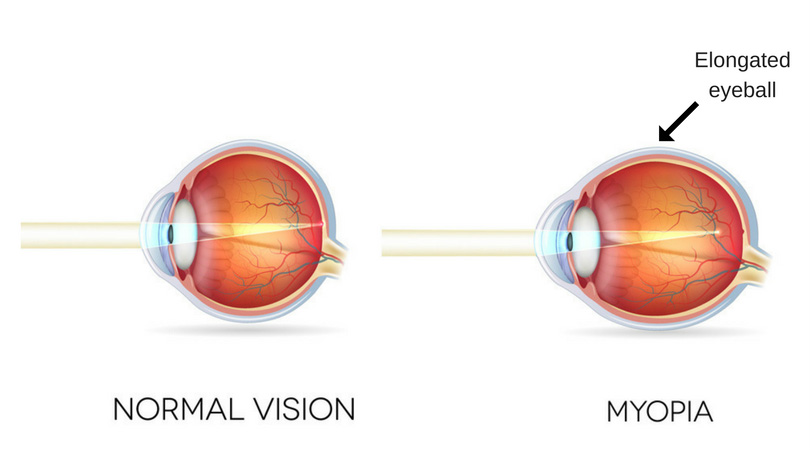What is myopia?
People who have myopia (also known as nearsightedness) have difficulty seeing distant objects, but can see objects that are near clearly. For example, a person who is nearsighted may not be able to make out highway signs until they are just a few metres away.
Myopia affects a significant percentage of the population. It’s an eye focus disorder that is easily corrected with eyeglasses, contact lenses or surgery.
Does myopia get worse with age?
Yes, it can. Especially during growth spurts of the pre-teen and teen years, when the body grows quickly, myopia can get worse. At the age of 20, myopia usually levels off. It's also possible for adults to be diagnosed with myopia. When this happens, it's usually due to visual stress or a disease like diabetes or cataracts.
Visual stress can be caused by spending too much time doing up-close activities, such as reading or doing computer work. Eye experts believe that your focusing muscles may get stuck in "near gear" from overusing them this way.
If you are an adult experiencing sudden nearsightedness, floaters (sort of like spots floating through your field of vision), flashes of light or shadows, or sudden sight loss in one eye, contact an eye care provider immediately to rule out a more serious health condition.
How is myopia treated?
Glasses or contact lenses can correct myopia in children and adults. For adults only (with rare exceptions for children), there are several types of refractive surgeries that can also correct myopia.
With myopia, your prescription for glasses or contact lenses is a negative number, such as -3.00. The higher the number, the stronger your lenses will be. The prescription helps the eye focus light on the retina, clearing up your distance vision.
- Eyeglasses. The most popular way for most people to correct myopia is with eyeglasses. Depending on the degree of vision correction needed, you will wear eyeglasses either daily — or only for when distance vision is needed. You may only need glasses for driving. Some kids with myopia may only need glasses to play ball, watch a movie or view the chalkboard. Some people may need to wear glasses constantly to see clearly. A single-vision lens will make distance vision clearer. But patients over 40 who have myopia may require a bifocal or progressive lens to see clearly both near and far.
- Contact lenses. Some people find that their distance vision is sharper and wider with contact lenses. A potential downside is they require more care to keep clean. Ask your provider which type might be right for your myopia level and other refractive errors.
- Ortho-k or CRT. Some people with mild myopia may be candidates for temporary corneal refractive contact lenses that you wear to bed to reshape the cornea temporarily, long enough to see for your daily activities.
- LASIK is a laser-assisted in situ keratomileusis procedure, the most common surgery to correct nearsightedness. In a LASIK procedure, your ophthalmologist uses a laser to cut a flap through the top of the cornea, reshape the inner corneal tissue and then drops the flap back into place.
- LASEK is a laser-assisted subepithelial keratectomy procedure. In a LASEK procedure, your ophthalmologist uses a laser to cut a flap through only the top layer (epithelium) of the cornea, reshapes the outer layers, and then closes the flap.
- PKR is short for photorefractive keratectomy, which is a type of laser eye surgery used to correct mild or moderate nearsightedness, and may also be used to correct farsightedness and/or astigmatism. In a PRK procedure your ophthalmologist uses a laser to reshape the surface of your cornea, which flattens it and allows light rays to focus on the retina. Unlike LASIK, the ophthalmologist does not cut a flap. PRK is preferred for patients with corneas that are thinner or have a rough surface because it disrupts less corneal tissue than a comparable LASIK surgery.
- Phakic intraocular lenses are an option for patients who have high myopia or whose corneas are too thin for PRK or LASIK. Phakic intraocular lenses are placed inside the eye just in front of the natural lens.
- Intraocular lens implant allows your ophthalmologist to surgically insert a new lens in your eye, replacing your natural one. This procedure is done before a cataract develops.
- Vision therapy is an option if your myopia is caused by spasms of your focusing muscles. You can strengthen the muscles through eye exercises and improve your focus.

